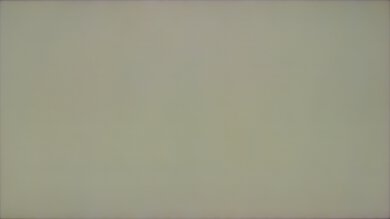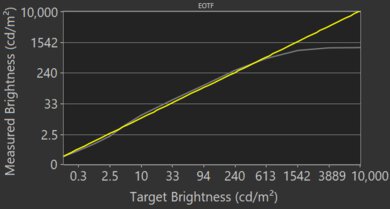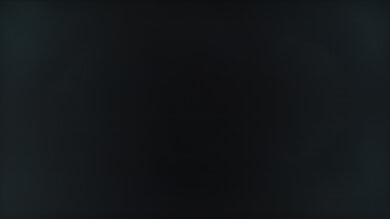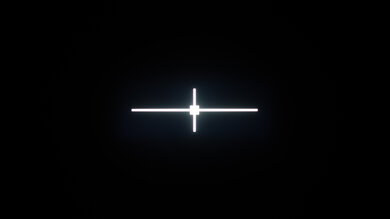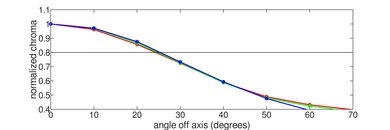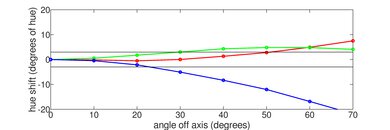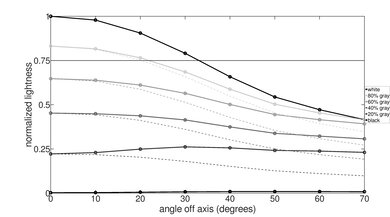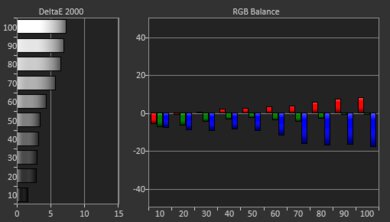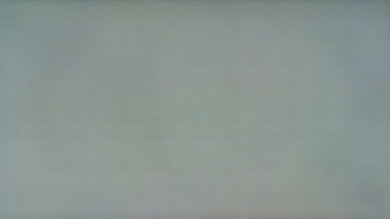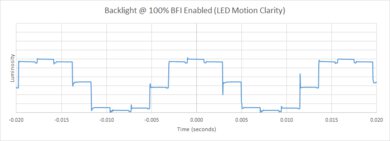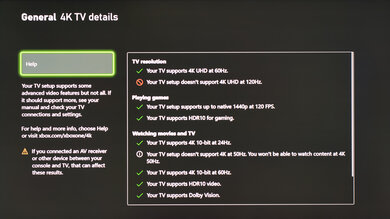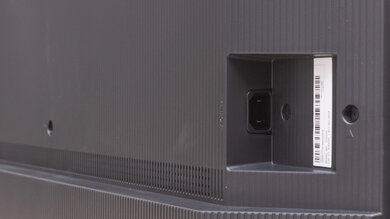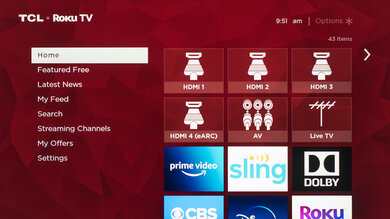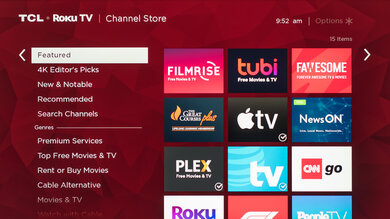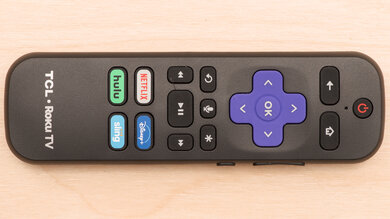The TCL 6 Series/R635 2020 QLED is TCL's flagship 4k LED TV for 2020. It's part of TCL's 6 Series lineup that includes the TCL 6 Series/R646 2021 QLED and the TCL 6 Series/R648 2021 8k QLED, and this model has Roku TV as its built-in smart interface. It's user-friendly and has a ton of apps available to download. It features Mini LED backlighting that allows the screen to get bright and is meant to provide greater control over the local dimming zones. It has most advanced features people are looking for in a high-end TV in 2020, like a 120Hz panel and variable refresh rate (VRR) support, but it doesn't have HDMI 2.1 bandwidth. It's been replaced in 2022 by the TCL 6 Series/R655 2022 QLED.
Our Verdict
The TCL R635 is a very good TV overall. It's great for watching movies in dark rooms thanks to its fantastic contrast ratio, but sadly, its local dimming feature causes blooming around bright objects. HDR content looks great as the TV displays a wide color gamut, and it gets bright enough to make highlights pop. It also has great gaming features like a quick response time and VRR support, but it doesn't have HDMI 2.1 bandwidth. It's good for watching sports and shows in bright rooms thanks to its high SDR peak brightness and decent reflection handling. Unfortunately, it has a narrow viewing angle, so it's not a good choice if you have a wide seating arrangement, as anyone sitting to the sides of the screen sees a degraded image.
- Fantastic contrast ratio.
- Excellent SDR peak brightness.
- Easy-to-use Roku interface.
- Displays wide color gamut for HDR content.
- Mini LED local dimming is mediocre.
- Narrow viewing angle.
- Uniformity issues.
The TCL R635 is very good for watching movies in a dark room. It has a VA panel that displays deep blacks, thanks to its fantastic contrast ratio. Sadly, the local dimming feature is mediocre, as there's noticeable blooming around bright objects. It also has some uniformity issues that are distracting in dark scenes. Fortunately, the TV automatically removes 24p judder from any source.
- Fantastic contrast ratio.
- Automatically removes judder from any source.
- Upscales lower-resolution content without any issues.
- Mini LED local dimming is mediocre.
The TCL R635 is good for watching TV shows in a bright room. It gets very bright and has decent reflection handling, so it combats glare very well. The built-in Roku OS is easy to use, and you can download a great selection of apps. Unfortunately, the TV has a narrow viewing angle, so it's not ideal for wide seating arrangements, as the image looks washed out from the sides.
- Excellent SDR peak brightness.
- Easy-to-use Roku interface.
- Upscales lower-resolution content without any issues.
- Narrow viewing angle.
The TCL R635 is good for watching sports in a bright room. It has a quick response time, so fast-moving content has minimal motion blur. It performs well in bright rooms because it gets bright enough to combat glare and handles reflections decently. Unfortunately, it has a narrow viewing angle, so it's not a good choice if you have a wide seating arrangement, as anyone sitting to the sides of the screen sees a degraded image. There's also some dirty screen effect in the center, which is distracting during sports with large areas of the same color, like hockey.
- Great response time.
- Excellent SDR peak brightness.
- Upscales lower-resolution content without any issues.
- Narrow viewing angle.
- Uniformity issues.
The TCL R635 is great for video games. It has a great response time, resulting in minimal motion blur, and there's a backlight strobing feature to improve the appearance of motion. It has low input lag for a responsive experience, but it's higher than other TVs, especially when gaming in 4k. The TV supports VRR for minimal screen-tearing and is capable of 120Hz, but since it lacks HDMI 2.1 bandwidth, you have to choose between 4k @ 60Hz or up to 1440p @ 120Hz. It's a great TV for dark-room gaming because it has a fantastic contrast ratio, but its local dimming feature is mediocre as it causes blooming.
- Fantastic contrast ratio.
- Great response time.
- VRR support.
- 120Hz panel.
- Mini LED local dimming is mediocre.
- No HDMI 2.1 bandwidth.
The TCL R635 is very good for HDR movies. It has a fantastic contrast ratio, resulting in deep blacks when viewed in the dark. Unfortunately, its local dimming feature is mediocre and causes blooming around bright objects when they're against a dark background. Fortunately, it displays a great wide color gamut for HDR content and gets bright enough to truly bring out highlights.
- Fantastic contrast ratio.
- Displays wide color gamut for HDR content.
- Gets bright enough to make highlights pop in HDR.
- Mini LED local dimming is mediocre.
The TCL R635 is great for HDR gaming. It has a quick response time, low input lag, and a 120Hz refresh rate with VRR support for a smooth and responsive gaming experience. Unfortunately, it lacks HDMI 2.1 bandwidth, so you have to choose between 4k @ 60Hz or up to 1440p @ 120Hz. HDR content looks great because it displays a wide color gamut, and it gets bright enough to make highlights pop. It also can display deep blacks, but sadly, its local dimming feature is mediocre and there's blooming around bright objects when they're against a dark background.
- Fantastic contrast ratio.
- Great response time.
- Displays wide color gamut for HDR content.
- Gets bright enough to make highlights pop in HDR.
- Mini LED local dimming is mediocre.
- No HDMI 2.1 bandwidth.
The TCL R635 is a good choice to use as a PC monitor. It displays chroma 4:4:4, which helps render text clearly, but only with a 4k resolution and not at 1080p or 1440p. It has a low input lag that delivers a responsive desktop experience and a quick response time for minimal blur behind quick cursor movements. Sadly, it has a narrow viewing angle, so the image looks washed out at the sides if you sit too close to the screen.
- Displays chroma 4:4:4 with a 4k resolution.
- Excellent SDR peak brightness.
- Narrow viewing angle.
- Uniformity issues.
Changelog
- Updated Sep 26, 2025: We uploaded the latest brightness measurements and uniformity photos for the Accelerated Longevity Test.
- Updated Jul 08, 2025: We uploaded the latest brightness measurements and uniformity photos for the Accelerated Longevity Test.
- Updated Apr 17, 2025: We uploaded the latest brightness measurements and uniformity photos for the Accelerated Longevity Test.
- Updated Feb 11, 2025: We uploaded the latest brightness measurements and uniformity photos for the Accelerated Longevity Test.
Check Price
Differences Between Sizes And Variants
We bought and tested the 55-inch TCL R635 (55R635), but our results are also valid for the 65-inch (65R635) and the 75-inch (75R635) sizes. The 55-inch unit we tested has about 220 local dimming zones, and it's advertised to have up to 240 on the larger sizes, so local dimming should perform the same between each size. TCL's lineup outside North America is very different, so we're not aware of any equivalents outside Canada and the United States.
| Size | US | Canada | Adjustable Stand |
| 55" | 55R635 | 55R635-CA | No |
| 65" | 65R635 | 65R635-CA | Yes |
| 75" | 75R635 | 75R635-CA | Yes |
If someone comes across a different type of panel or if their TCL R635 doesn't correspond to our review, let us know, and we will update the review. Note that some tests, such as gray uniformity, may vary between individual units.
You can see the label for our unit here.
Popular TV Comparisons
The TCL R635 offers good performance for its price, and most people should enjoy this TV. However, it's not nearly as good as its main competitor, the Hisense H9G, as it has too many uniformity issues, and the local dimming feature doesn't perform as well as some other higher-end TVs in 2020.
Also, see our recommendations for the best budget TVs, the best TCL TVs, and the best 4k TVs.
The TCL Q750G is better than the TCL R635. The Q750G has much better black uniformity and contrast due to its highly effective local dimming feature, so it’s better suited for a dark room. The Q750G is also much better for gaming due to its HDMI 2.1 bandwidth, up to 4k @ 144Hz support, and lower input lag.
The TCL R635 and the TCL 6 Series/R646 2021 QLED sit alongside each other in the TCL 6 Series lineup. The R646 was released a year after the R635, so it improves in a few areas. The main difference is that the R646 has much better local dimming as there's less blooming around bright objects, but it doesn't deliver as deep blacks with local dimming enabled. The R646 also has two HDMI 2.1 inputs, which the R635 doesn't have, meaning you can use it for 4k gaming up to 120 fps. They each have different smart systems, with the R646 using Google TV and the R635 using Roku.
The TCL QM850G is better than the TCL R635. The QM850G has much better black uniformity and contrast due to its highly effective local dimming feature, so it's better suited for a dark room. The QM850G is also much better for gaming due to its HDMI 2.1 bandwidth, up to 4k @ 144Hz support, and lower input lag.
The Hisense U7K is better than the TCL R635. The Hisense has better black uniformity and a much better local dimming feature for deeper blacks than the TCL, so it’s the better option for a dark room. The Hisense is also much better for gaming due to its HDMI 2.1 bandwidth, up to 4k @ 144Hz support, and lower input lag.

We buy and test dozens of TVs yearly, taking an objective, data-driven approach to deliver results you can trust. Our testing process is complex, with hundreds of individual tests that take over a week to complete. Most of our tests are done with specially designed test patterns that mimic real content, but we also use the same sources you have at home to ensure our results match the real-world experience. We use two main tools for our testing: a Colorimetry Research CR-100 colorimeter and a CR-250 spectroradiometer.
Test Results

The TCL R635 has a great design that's very similar to the TCL 6 Series/R625 2019. The main frame holding the panel is made out of metal and plastic, and it looks like glass, giving the TV a more premium feel. It has new feet compared to the 2019 model, as they're set at an angle instead of being straight.
The TV's brightness has fluctuated a bit but has remained roughly the same after 12 months, and there has been no noticeable shift in the uniformity of the panel.
The back of the TCL 55R635 looks a bit different from that of the TCL 6 Series/R625 2019. The top half is made from a shiny, glossy plastic that feels solid. The bottom half, where the inputs are, is made from matte plastic that feels a bit cheap. Cable management is serviced through the feet.
The TCL 55R635 has a fantastic contrast ratio, even better than the TCL 6 Series/R625 2019. It produces deep blacks, which is expected from a VA panel, and the local dimming feature significantly improves the contrast.
This TV has excellent SDR peak brightness. It gets bright enough to combat glare, but it's not the most consistent across varied content, as extremely small and extremely large areas aren't as bright, as seen in the 2% and 100% window tests. These are caused by frame dimming and the Automatic Brightness Limiter (ABL).
These measurements are after calibration with the following settings:
- Picture Mode: Movie
- Backlight: Max
- Local Dimming: High
- Gamma: 2.2
The TV has mediocre local dimming. There's visible blooming around bright objects, and due to that blooming, if there are light sources near people's faces, it causes bright spots near or on faces. Lights pop a bit, but when the light sources are extremely small, they don't pop as much, and there's some black crush.
Subtitles don't get very bright either, and there's blooming around them too, as you can see in this photo. Fast-moving objects have visible transitions between the dimming zones, which is distracting. Overall, the local dimming improves the contrast because it helps the TV deepen blacks, but it also causes bright highlights to be more dim.
We tested local dimming with Local Contrast set to 'High'.
The local dimming feature looks the same in Game Mode as outside of it. There's still too much black crush and blooming.
The TV has impressive peak brightness in HDR. It gets bright in most scenes, but really small highlights are dimmer due to the black crush. Even large areas of bright colors are dimmer than the rest, but other scenes are more consistent. The EOTF follows the target curve fairly well, but some dark scenes are a bit too dark.
These measurements are after calibrating the HDR white point with the following settings:
- HDR Picture Mode: Dark HDR
- Brightness: Max
- Contrast: Max
- Local Dimming: High
If you want the brightest image possible, use these same settings but with the Picture Mode set to 'Bright HDR'.
There is no noticeable difference with HDR peak brightness when the TV is set to Game Mode.
The TV has decent gray uniformity. The edges of the screen are slightly darker, and there's some dirty screen effect in the center that can be distracting during sports or when using the TV as a PC monitor. The uniformity is a bit better in near-dark scenes, but there's backlight bleed along the edges.
The black uniformity on the TCL 6 Series 2020 is just okay. There's noticeable backlight bleed near the corners that creates a strange halo effect. However, local dimming improves the contrast and removes the halo but also causes blooming around bright objects.
The TCL R635 has decent reflection handling. It performs well in moderately lit rooms, but reflections are distracting in rooms with direct sunlight. The replacement model, the TCL 6 Series/R655 2022 QLED, has much better reflection handling and looks better in a bright room.
The TV has mediocre color accuracy pre-calibration. Most colors are inaccurate, and the white balance is off. The color temperature is slightly warm, giving the image a red/yellow tint. Lastly, the gamma doesn't follow the curve well, so most scenes are darker than they should be.
After calibration, color accuracy is exceptional. The light blues are still a bit off, but any remaining inaccuracies are very difficult to spot. Gamma is perfect, and the color temperature is very close to the 6500K target.
See our recommended settings here.
The TV displays 4k content perfectly, and unlike the TCL 6 Series/R625 2019, there aren't any issues with dithering or crosshatching.
The TCL 55R635 is a 4k TV that doesn't display an 8k image. The replacement to this TV, the TCL 6 Series/R648 2021 8k QLED, supports an 8k resolution.
The TV uses a BGR subpixel layout, which affects the way text is displayed when using the TV as a PC monitor. You can read about it here.
The TV has an impressive color gamut. It supports a wide color gamut and has outstanding coverage of the commonly used DCI P3 color space used in most HDR content. It also has decent coverage of the wider Rec. 2020 color space that is increasing in popularity with content creators.
The TV's color volume is very good. This TV displays dark, saturated colors well due to the fantastic contrast ratio, but like most LED TVs, it can't display extremely bright blues.
The TCL R635 has mediocre gradient handling. There's banding with most colors, especially darker shades. It's most noticeable with dark grays and blues. The Noise Reduction setting doesn't improve the gradient handling. It has much worse gradient handling than the lower-end TCL 5 Series/S535 2020 QLED.
We don't expect VA panels to experience permanent image retention, as the VA panel in our long-term test appears immune.
The TV has a backlight strobing feature, known as black frame insertion (BFI), to help reduce motion blur. It only flickers at 60Hz, even for 120Hz content, and it doesn't dim the screen like the BFI feature on most other TVs does. However, the timing is off, resulting in noticeable crosstalk that creates the image duplication you see with the letter R in the photo. The BFI score is based on the flicker frequency and not the actual performance.
Due to the TV's quick response time, there's visible stutter with lower-frame rate content because each frame is held on longer.
This TV automatically removes judder from any source, which helps with the appearance of motion in movies, and you don't need to turn on any setting for it to work.
The TCL R635 supports variable refresh rate technology to reduce screen tearing. The manufacturer doesn't advertise it as supporting FreeSync, but strangely, when connected to a PC with a Radeon graphics card, FreeSync is enabled in the Radeon settings. However, FreeSync doesn't work because there's still screen tearing.
The TCL R635 has low input lag in Game Mode, although it's not as low as the lag on the TCL 6 Series/R625 2019, and it's a bit higher than many other TVs on the market.
The TV displays proper chroma 4:4:4, which is important for reading text if you use it as a PC monitor. However, it only displays 4:4:4 with a 4k resolution, so text doesn't look clear if you use the TV with a 1080p or 1440p resolution.
The TV supports up to 4k @ 60Hz from the Xbox Series X and PS5. Since it lacks HDMI 2.1 bandwidth, 4k @ 120Hz isn't possible, but because it has a 120Hz panel, it also supports up to 1440p @ 120Hz on both the Xbox Series X and the PS5. It has an Auto Low Latency Mode that automatically switches the TV into Game Mode when launching a game from a compatible device.
Unfortunately, the TV is limited to HDMI 2.0 bandwidth.
The Composite In input needs an adapter. Unlike the TCL 6 Series/R625 2019, the TV doesn't come with one.
This TV has eARC support, which allows you to send high-quality Dolby Atmos via TrueHD or DTS:X via DTS-HD MA through an HDMI connection.
The built-in speakers have a good frequency response. The bass gets fairly low, but like most TVs, it doesn't get low enough for any rumble or thump. The sound profile is well-balanced overall, resulting in clear dialogue. It also gets loud, which is great if you want to place it in a noisy environment.
This TV has great distortion performance. There's minimal harmonic distortion at moderate listening levels, and even though there's a bit at its max volume, most people won't hear it.
This TV has built-in Roku OS, which is user-friendly and runs very smoothly. If you're not a fan of Roku and prefer Google TV, check out the TCL 6 Series/R646 2021 QLED.
This TV has the same Roku remote as the TCL 6 Series/R625 2019. It's small and simple, with shortcut buttons to popular streaming services. The voice control can be a hit or miss at times, as we could search for specific content in apps, but when we asked it to change the backlight setting, it changed the volume instead.


